What was the first capital of Poland?
While the people of Poznań are eager to claim their city as Poland’s first capital, anyone with a passing knowledge of Polish history will recognise this as a fib. The first capital of Poland was Gniezno, now a picturesque town lying just 50km east of Poznań. In all of Poland nowhere is more synonymous with the foundation of the Polish state than Gniezno. Although the capital was eventually shifted to Kraków and later to Warsaw, Gniezno remained an important centre of worship and is still regarded today as Poland’s ecclesiastical capital. For the visitor, it is an intriguing town full of spires and cobbles, a superb medicine to the frantic flap of urban Poland.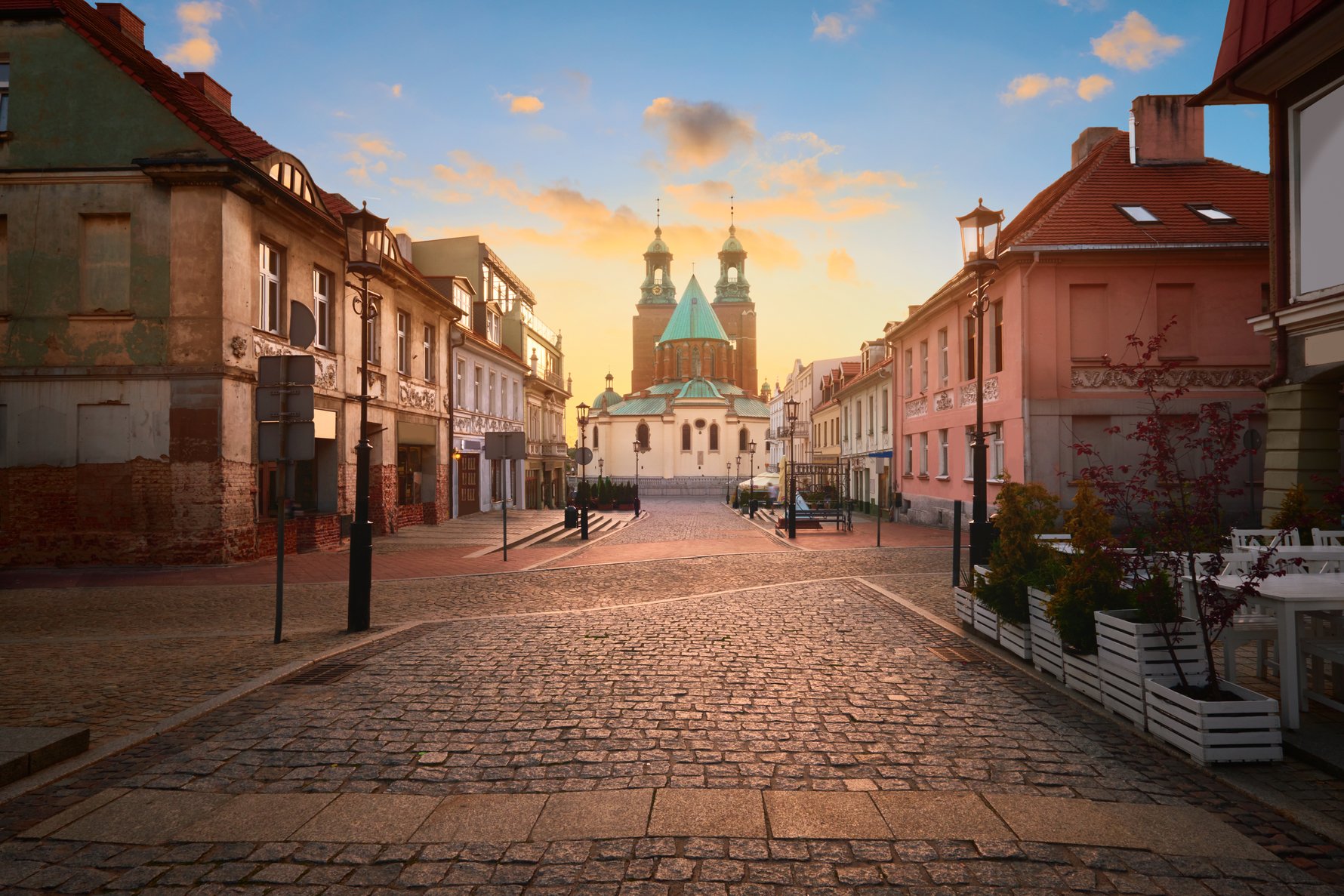
The Legend of Lech, Czech and Rus
Etching by Walery Eljasz-Radzikowski.
Whether there is any element of truth to the legend or not, the area around Poznań and Wielkopolska (ENG: Greater Poland) is certainly the cradle of the Polish nation, with some of the oldest sites in the country being located here. When Duke Mieszko I was christened, thus founding Poland as a state in 966, the base of the Catholic church in the town effectively made Gniezno the country's first capital!
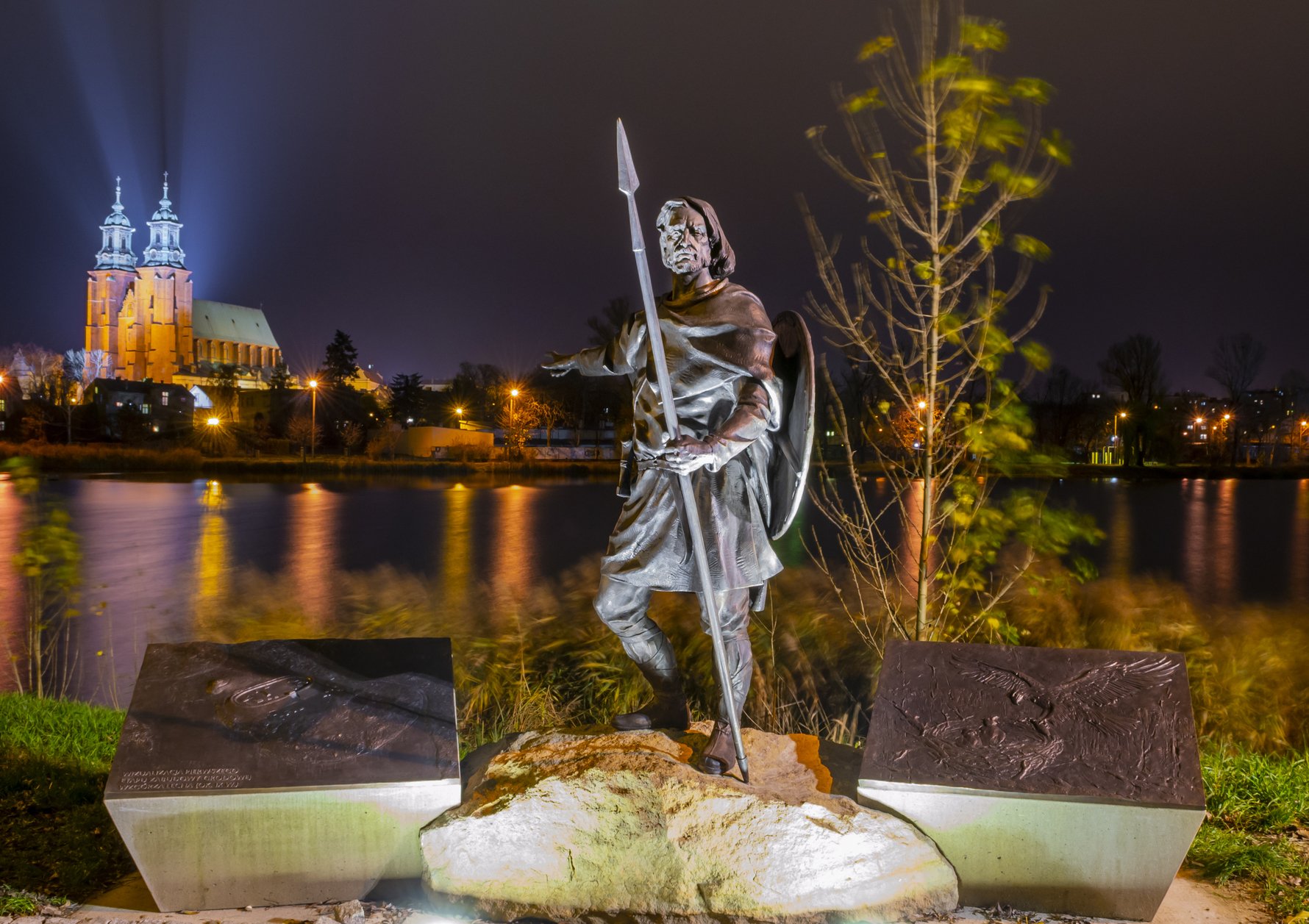
The History of Gniezno
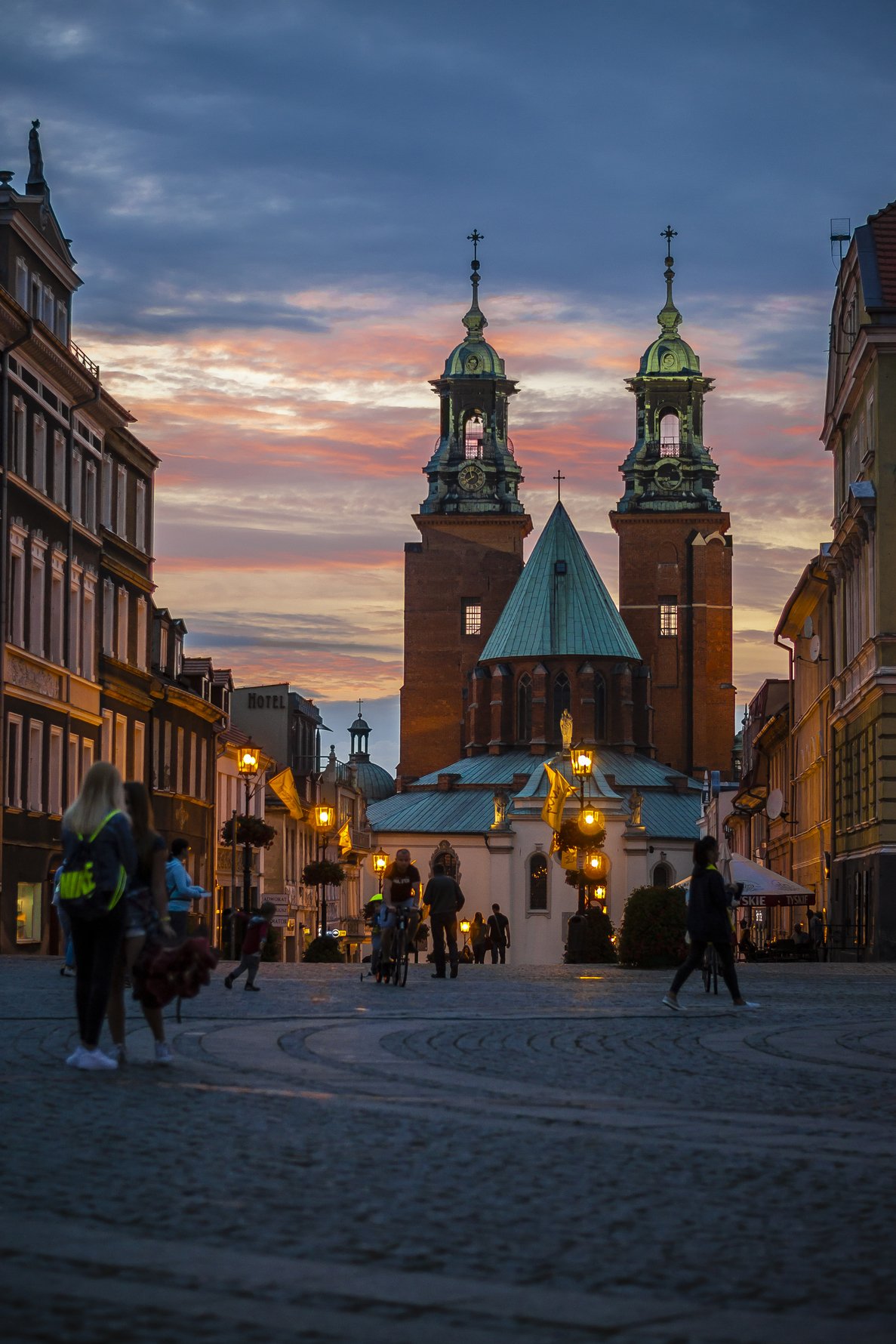
worship in the 6th/7th century and Mieszko I's first churches.
Photo by S. Uciński, © Urząd Miejski w Gnieźnie
Before Mieszko I's christening and the subsequent creation of the Polish state in 966, Gniezno's is believed to have been established around the turn of the 6th and 7th century, with the numerous hills and surrounding lakes offering the settlement natural geographic defenses. Archaeological evidence shows that Lech Hill, specifically where St. George Church now stands, was also the site of pagan worship, believed to be a 'temple' in honour of the Slavic god Niya (see below).
Duke Mieszko I was a 'Piast', the first ruling dynasty of Poland, who primarily resided in Gniezno from the mid-10th century onwards. Naturally, following the christening of Poland and the 'validation' of the Piast Polish state in the eyes of Western Europe, Gniezno functioned as its capital for the next 72 years. In addition to his own castle and chapel, erected on the site of the afore-mentioned pagan temple, Mieszko built one of Gnieznos first churches in 970 in place of an existing stone oratory structure, in the shape of a cross. His wife, the Bohemian princess Dąbrówka, is believed to have been buried there in 977. At some stage, between Mieszko I's death and the year 999, son and successor Bolesław I the Brave rebuilt the church in a rectangular shape. He also elevated its status, creating the foundation of today's Cathedral of Gniezno.
Gniezno became the site of several Zjazdy (ENG: congresses/meetings) with local tribal leaders and political/religious envoys from the west. In 999, Bolesław I the Brave established Gniezno as an archbishopric (in other words, an office of an archbishop). A year later in 1000, the most well-known Zjazd Gnieźnieński (ENG: Congress of Gniezno) took place, when Holy Roman Emperor Otto III made his pilgrimage to visit the tomb of St. Wojciech (also known as St. Adalbert) the Czech missionary who had been murdered during his attempts to Christianise the pagan tribes on the Pomeranian-Baltic coast. The Congress helped to strengthen ties between the new Polish state and the Holy Roman Empire and also lead Pope Sylwester II to create a church metropolis in the capital and its subordinate bishoprics in Krakow, Wrocław and Kołobrzeg.
However, the introduction of Christianity to Central Europe did not come without resistance. Instability in the young Piast state culminated in the Pagan Reaction in the 1030s, where the still-pagan peasant class rebelled against the nobility, who were more-associated with the new institution of Catholicism. The instability was taken advantage of by forces under the command of Bretislav I of Bohemia, who burnt and pillaged Gniezno in 1038. Gniezno Cathedral was also destroyed and later rebuilt by Bolesław II the Generous (AKA the Bold) over the following two decades. The destruction in Wielkopolska at this time was so severe that, in 1038, the capital was moved to Kraków. For this reason, Gniezno has remained a relatively-small town, just the way we like it!

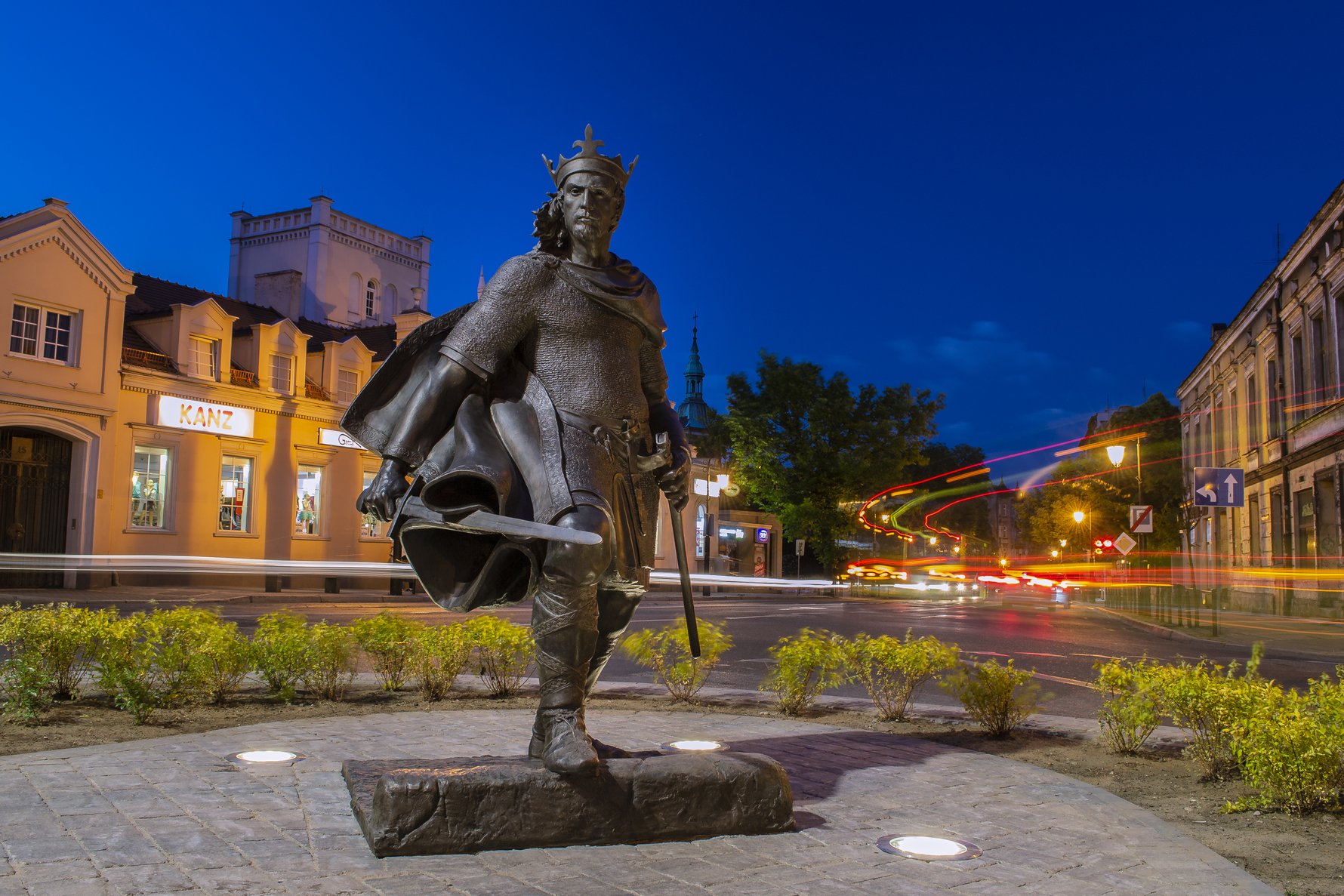
In 1175, the city received it's famous 'Gniezno Doors', a bronze work forming the entrance to the city's cathedral and a landmark in Polish romanesque art. The doors feature 18 bas reliefs that recount the life and death of St. Wojciech. Fortunately, they survived the destruction of Gniezno in 1192 during a civil war between High Duke Mieszko III and his younger brother Kazimierz II the Just. Gniezno received city rights in 1285, which saw yet more churches popping up, including St. Michael's Church and the Franciscan Monastary. The founding city in the 13th and 14th centuries was surrounded by walls and a moat to the east. Three city gates led into the city: Poznańska (now ul. Tumska), Toruńska and Pyzdrska.
In 1331, the city was destroyed by the Teutonic Knights, however, a big cash splash from Casimir the Great (1333–1370) saw rapid economic development of the city and mass reconstruction. During the reign of Władysław Jagiełło, the Piast Castle strengthened its position as the "capital of Christianity", as the archbishops of Gniezno were granted the title of Primate of Poland from 1419 and the reserved dignity of a cardinal. More religious credentials equals more churches! In the following decade, the impressive Holy Trinity Church was built, which included a fantastic astronomic clock and mechanical St. Wojciech!
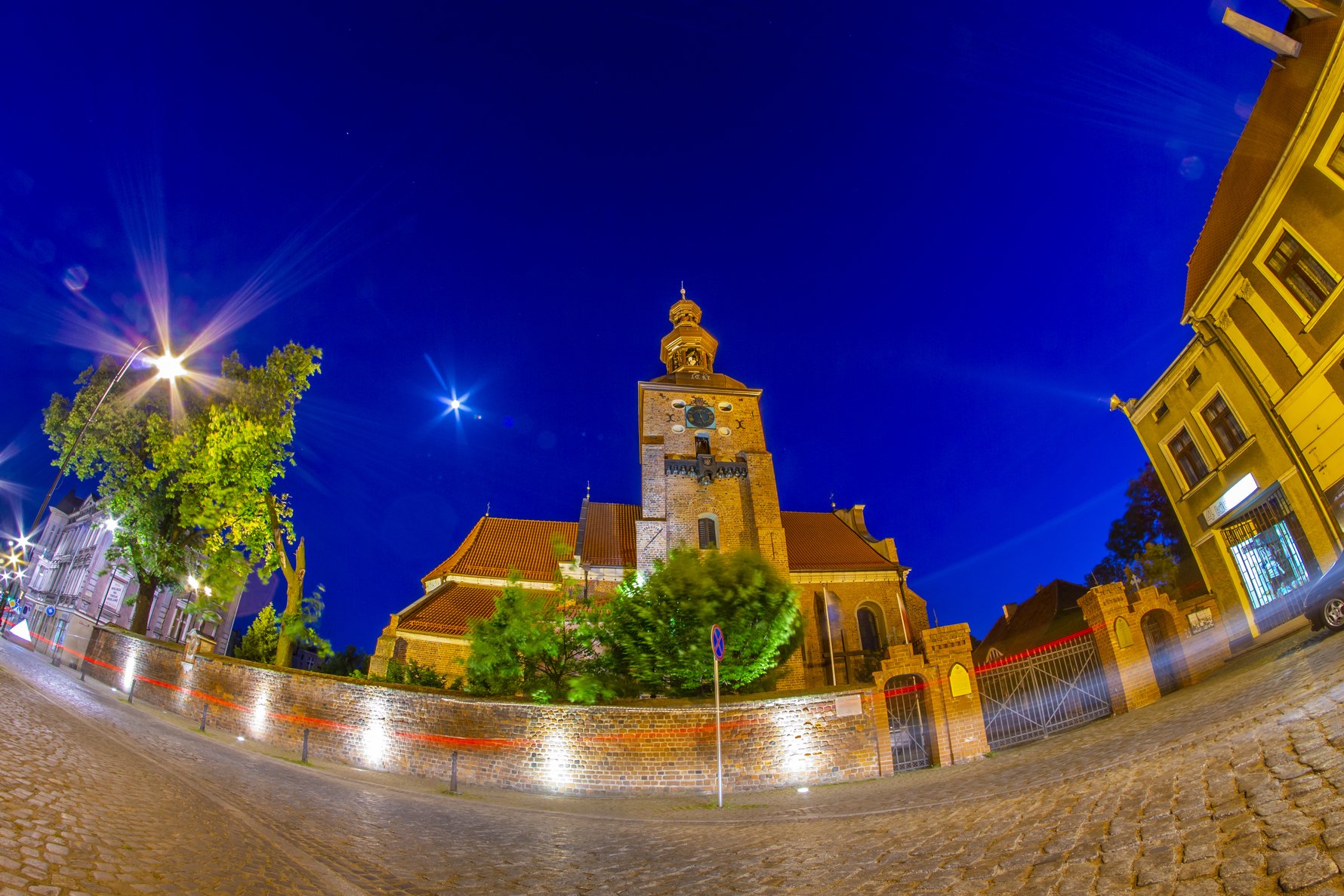
In the following years, Gniezno developed thanks to domestic and international trade. Every year, a number of trade fairs were held in Gniezno, which drew merchants from as far abroad as Belarus, Italy and England. At the beginning of the 16th century, with over 300 craft workshops, Gniezno was regarded as one of the most important cities in Poland. Despite numerous fires, plagues and the Swedish deluge of the 17th and 18th centurty, Gniezno maintained its strong position and became the capital of its own voivodeship in 1768. During this time, it was consider a center for arts, music and culture in Poland, second only to the city of Kraków.
In 1793, as a result of the Second Partition of Poland, Gniezno came under Prussian rule and, with the exception of the short-lived Duchy of Warsaw (1807-1815), it would remain as such until the end of World War I. Yet another fire in 1819, as well as Prussian investment in the area, saw the city change notably in this time. Most notably, the market square was developed, as well as several main streets along the city's former defenses. In 1872, Gniezno was connected by rail to Toruń and Bydgoszcz, which further developed the city.
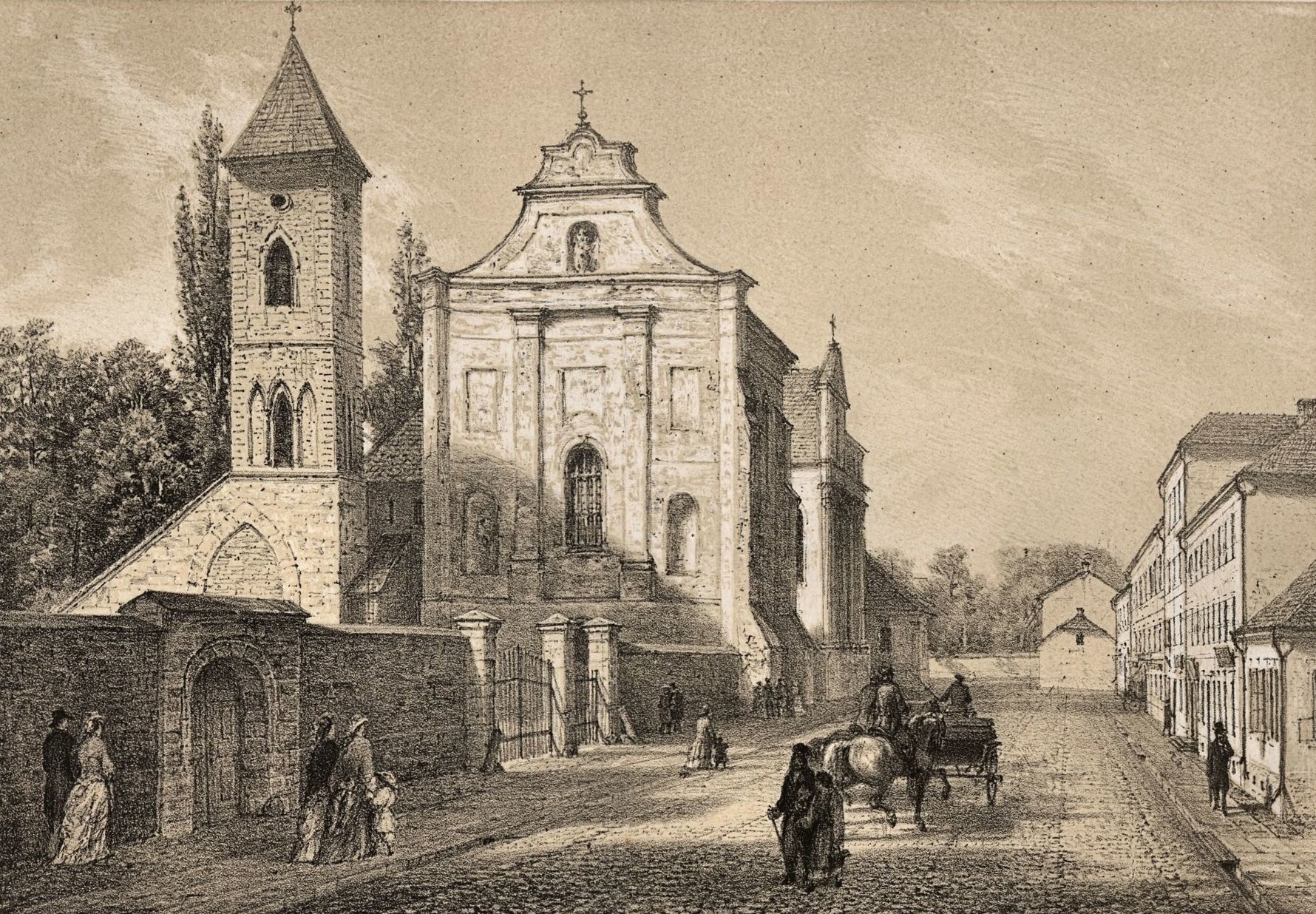
Following Polish Independence at the end of World War I, Gniezno enjoyed two decades as a major educational center of the country. This was disrupted in 1939 by the invasion of Nazi Germany, which saw several local institutions repurposed for various administrative and recreational purposes. Most notably, Gniezno Cathedral was used as a concert hall.
During Communism, Poland was revitalised by the election of Pope John Paul II, formerly Bishop Karol Wojtyła of Kraków, in 1978. A year later, during his official visit to Poland, he visited Gniezno and was greeted by thousands of locals. The 'psychological earthquake' that shook Poland is generally considered to be a major force in finally toppling the Communist regime in 1989. Pope John Paul II would visit again in 1997, in the millenial commemoration of St. Wojciech's martyrdom.
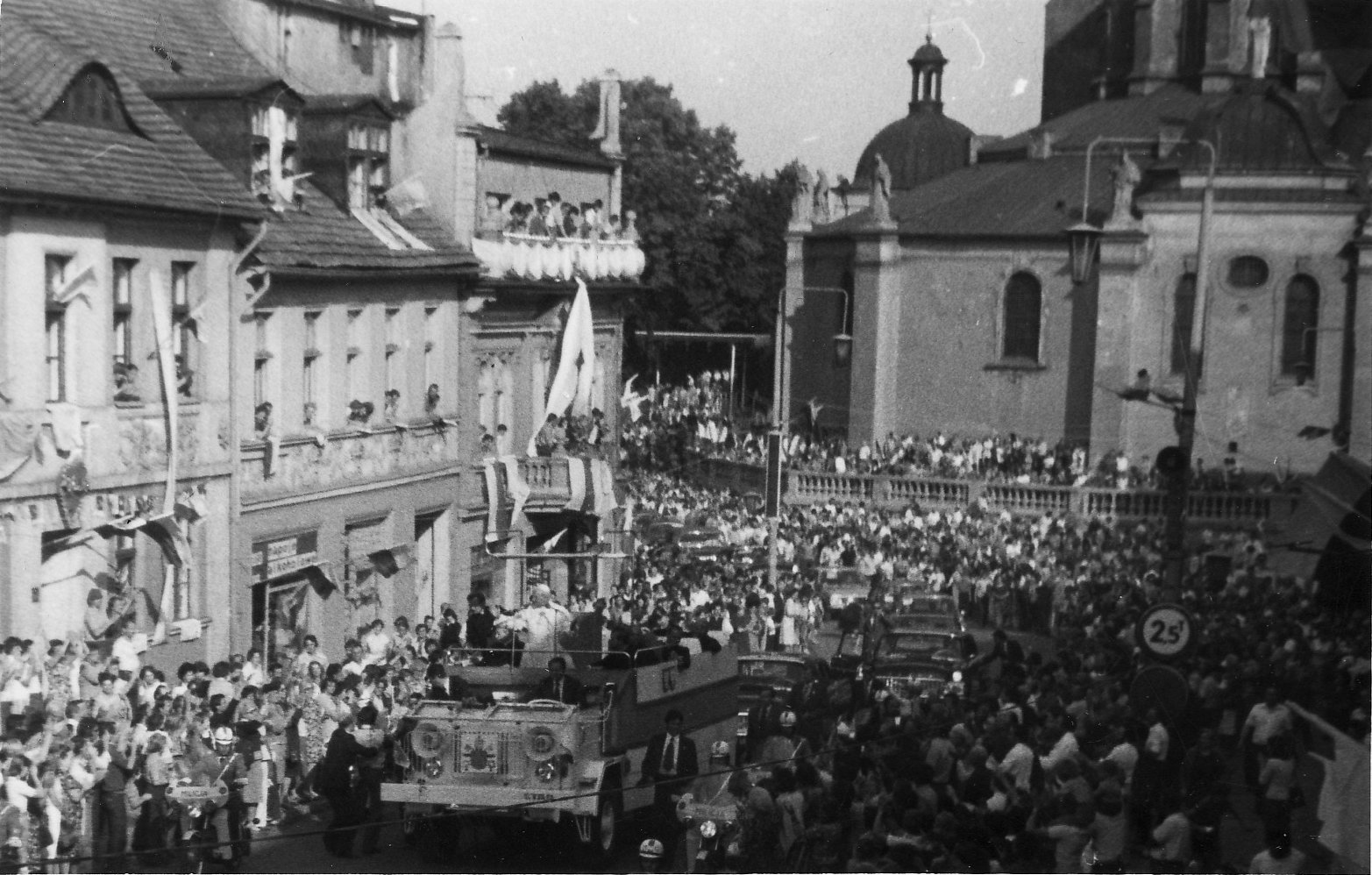
Although overshadowed by the nearby city of Poznań, Gniezno has grown significantly in the 21st century. In addition to the new housing estates that have sprung up over the last decade, the old town of Gniezno has been beautifully-restored, along with the Market Square, where the Donors' Circle with the coats of arms of 78 cities is located! Enjoying a steady amount of tourism every year, thanks to its important historical status, there are a number of museums in town that cover Poland's earliest period as well being the cradle of the catholic church in one of world's most devout countries. Nearby lakes and resevoirs are also enjoyed by holidaying Poles in the summertime, providing some great watersport activities as well as camping, fishing and hiking.
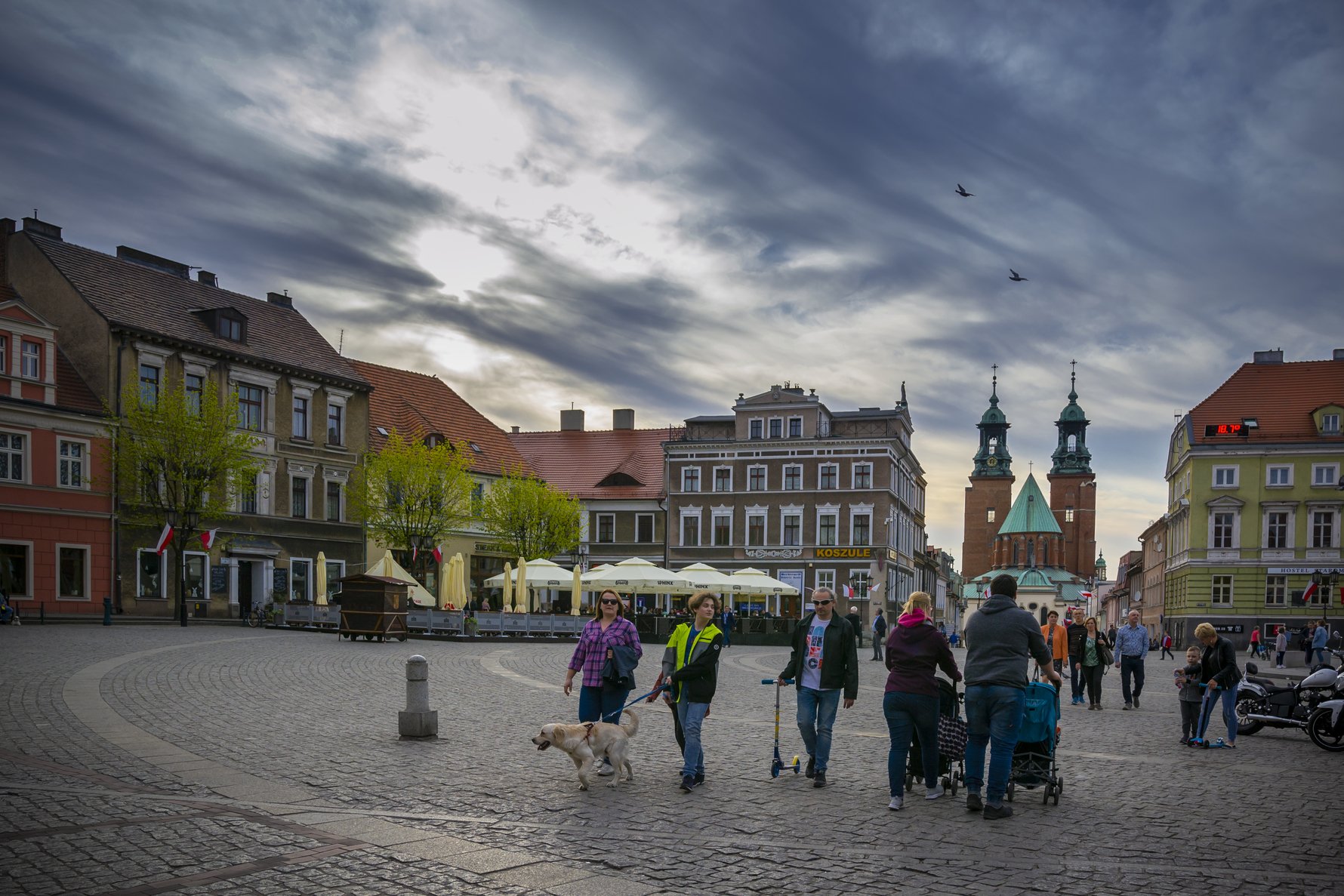
What is Niya and how is it connected with Gniezno?
Niya is a genderless slavic god that was worshipped by pagan Poles before Christianity was established in the region. While Niya's exact function in the Slavic pantheon is unknown, it is believed that this god was associated with death and the afterlife. 15th Century Polish historian Jan Długosz wrote that pagans had erected a 'temple' in honour of Niya in Gniezno. Later excavations in the cellars of St George Church on Lech Hill revealed the presence of a stone mound on which animal bones and ceramics were found, believed to be remnants of sacrifices. It is believed that this place of worship corresponds with Długosz's writings. With a renewed interest in Slavic paganism and the rise of the Rodzimy Kościół Polski (ENG: Native Polish Church), the site on Lech Hill has become essential sightseeing for those pursuing an alternate faith!
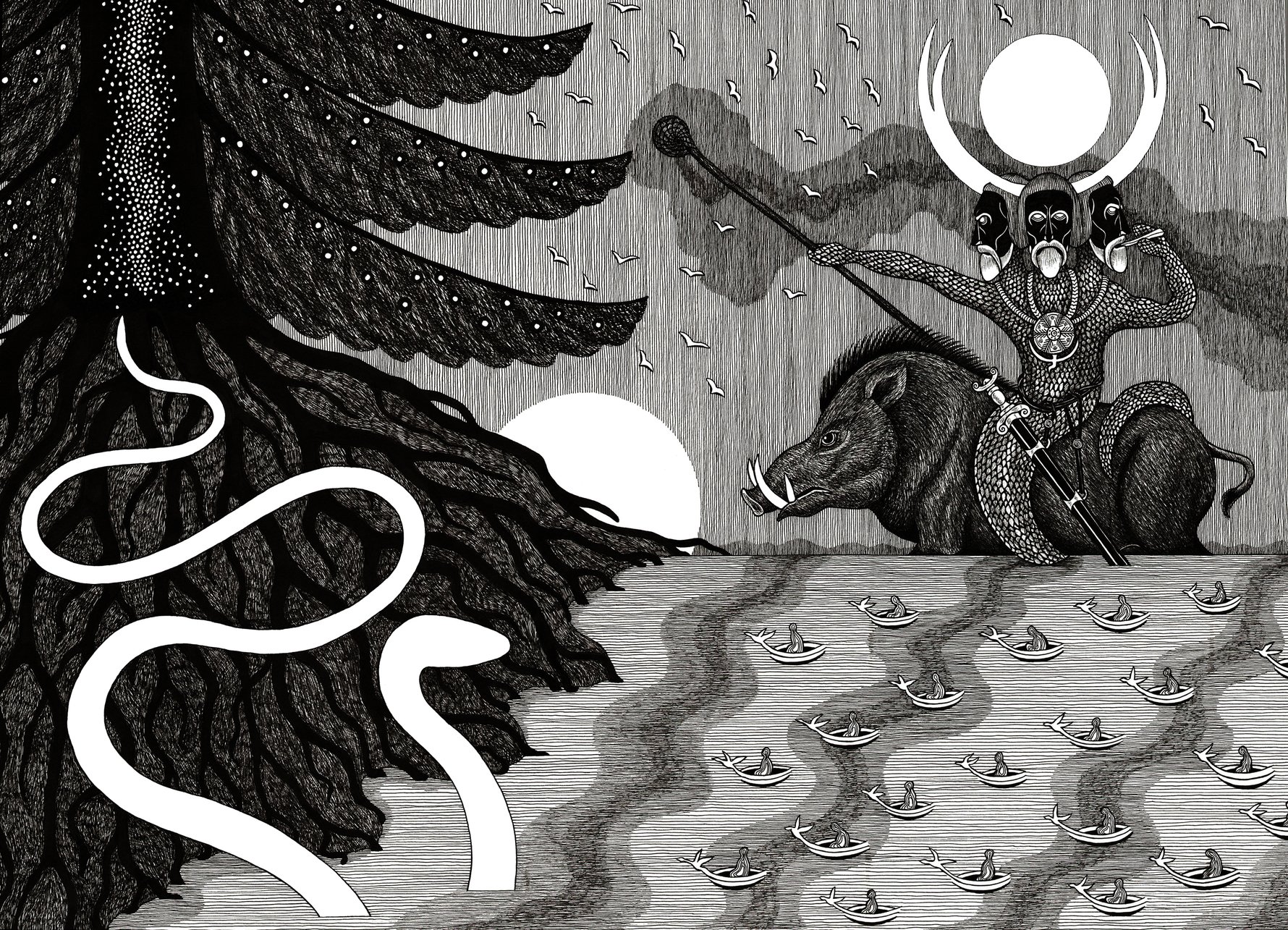


Comments